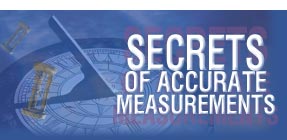 |
 |
 |
| RU |
|
Login
Newsletters
There is no newsletter category found. Information
|
NIST’s Second ‘Quantum Logic Clock’ Based on Aluminum Ion is Now World’s Most Precise Clock 02/10/2010 Physicists at the National Institute of Standards and Technology (NIST) have built an enhanced version of an experimental atomic clock based on a single aluminum atom that is now the world's most precise clock, more than twice as precise as the previous pacesetter based on a mercury atom. The new aluminum clock would neither gain nor lose one second in about 3.7 billion years.
The NIST quantum logic clock is so named because it borrows techniques that are key to quantum computers. In the NIST clock, the input options are two different quantum states, or internal energy levels, of an aluminum ion trapped by electric fields. Information about this state is transferred to a beryllium ion, which, depending on the input, produces different signals that are easily detected. The goal is to tune the clock laser to the exact frequency that prompts the aluminum to jump from 0 to 1. The actual measurement of the ticking of the clock is provided not by the ions but rather by the clock laser's precisely tuned center frequency, which is measured with a “frequency comb,” a tool for measuring very high optical frequencies, or colors of light.
The new clock is the second version of NIST’s “quantum logic clock” and differs from the original version in several ways. Most importantly, it uses a different type of “partner” ion to enable more efficient operations. Aluminum is an exceptionally stable source of clock ticks but its properties are not easily manipulated or detected with lasers. In the new clock, a magnesium ion is used to cool the aluminum and to signal its ticks. The original version of the clock used beryllium, a smaller and lighter ion that is a less efficient match for aluminum. The enhanced clock gives more than twice the precision of the original mercury-based clock. In addition to demonstrating that aluminum is now a better timekeeper than mercury, the latest results confirm that optical clocks are widening their lead—in some respects—over the NIST-F1 cesium fountain clock, the U.S. civilian time standard, which currently keeps time to within 1 second in about 100 million years.
Because the international definition of the second (in the International System of Units, or SI) is based on the cesium atom, cesium remains the “ruler” for official timekeeping, and no clock can be more accurate than cesium-based standards such as NIST-F1.
Aluminum is one contender for a future time standard to be selected by the international community. NIST scientists are working on five different types of experimental optical clocks, each based on different atoms and offering its own advantages. NIST’s construction of a second, independent version of the logic clock proves it can be replicated, making it one of the first optical clocks to achieve that distinction. Any future time standard will need to be reproduced in many laboratories.
Clocks have myriad applications. The extreme precision offered by optical clocks is already providing record measurements of possible changes in the fundamental “constants” of nature, a line of inquiry that has important implications for cosmology and tests of the laws of physics, such as Einstein's theories of special and general relativity. Next-generation clocks might lead to new types of gravity sensors for exploring underground natural resources and fundamental studies of the Earth. Other possible applications may include ultra-precise autonomous navigation, such as landing planes by GPS.
NIST’s original logic clock, method of operation and comparison to the mercury clock are described at http://www.nist.gov/public_affairs/releases/logic_clock/logic_clock.html Official press-release: http://www.nist.gov/public_affairs/releases/logicclock_020410.html
National Institute of Standards and Technology (NIST), known between 1901 and 1988 as the National Bureau of Standards (NBS), is a measurement standards laboratory which is a non-regulatory agency of the United States Department of Commerce. NIST's mission is to promote U.S. innovation and industrial competitiveness by advancing measurement science, standards, and technology in ways that enhance economic security and improve our quality of life.
|
Current issue
Search
|
|
|
| © "Test & Measuring Instruments and Systems" ("KIPiS"), 2000-2024 |

























